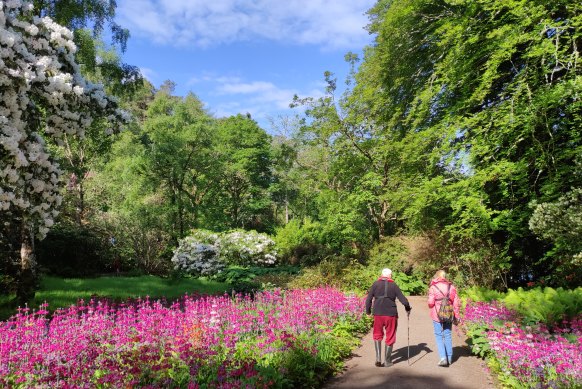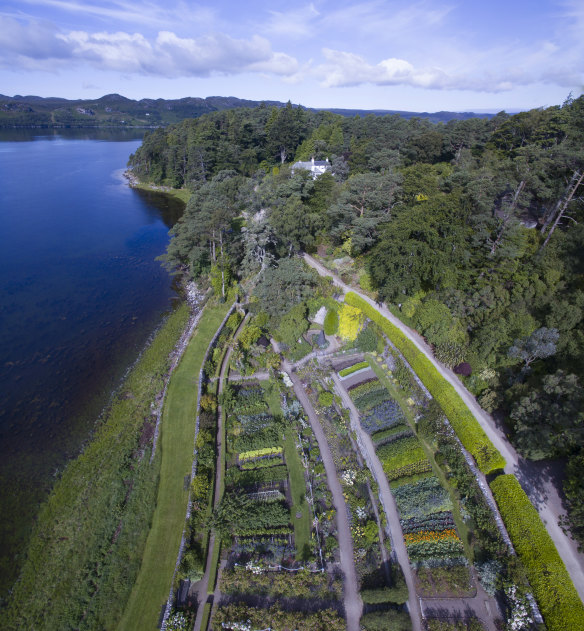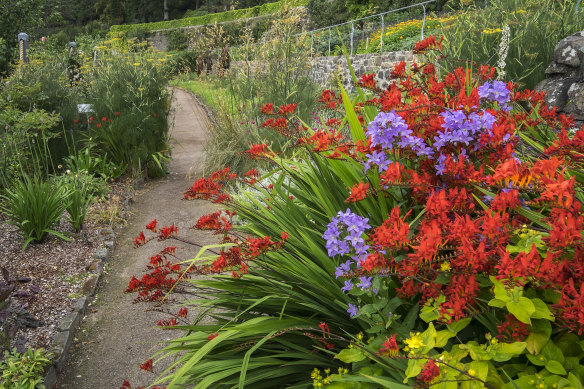
Being at the mercy of those fickle Atlantic weather systems, the west coast of Scotland gets its fair share of dreich days (dreich meaning damp, gloomy, miserable). But today is not one of them. The sky is a brilliant blue and all the other hues of the rainbow glow as we amble along sweetly scented paths flanked by flowering trees, lawns and shrubs radiating under shafts of spring sunlight. Making this mood-boosting setting even lovelier is the sound of music drifting between the branches. Someone, somewhere not far from here, is playing the bagpipes.

The “Impossible Garden” that was planted in the 1860s.Credit:
We’ll find out who later, but first we delve deeper into the botanical wonderland that is Inverewe Garden. Our Ponant cruise ship, Le Boreal, has dropped anchor beside it in Loch Ewe, a deep-sea inlet sheltered from the Atlantic Ocean. This loch was a hive of activity in World War II – an assembly point for the Allies’ Arctic convoys – but it seems we’re the only ones here this morning, bar the swimming seals bobbing their heads above the water as we zip over to the garden’s jetty by Zodiac.
Inverewe Garden was created in the 1860s by a young Scot, Osgood Mackenzie, whose mother had bought him this then barren parcel of land spanning a promontory peering over the loch and inland towards the Torridon Hills – some of the craggiest peaks in the Highlands. Then aged just 20, Mackenzie built a mansion and sowed the seeds for what critics would dub “The Impossible Garden”.
After planting native and Scandinavian pines to help shield the site from the feisty winds and saltwater spray, Mackenzie began experimenting with exotic plants from across the planet. And over the decades, he discovered that, thanks to the warming currents of the Atlantic Gulf Stream, species that would usually wither at this northerly latitude (similar to Newfoundland and Gothenburg) could flourish like they do at more southerly climes, including British botanical hotspots such as Cornwall and London’s Kew.

Loch Ewe was a hive of activity during World War II.
Butterflies and birdsong accompany us as we pass luminescent thickets of azaleas and rhododendrons, about 400 varieties of which bud at Inverewe, some originally from India, Nepal and China (every month sees different rhododendrons bloom here, and in 2019, gardeners were amazed to see a multicoloured hybrid with its bell-shaped petals shaded white, pink and yellow).
Himalayan blue poppies, Mediterranean rock roses, South African succulents, Chilean monkey puzzles, giant Brazilian rhubarbs, towering Californian redwoods and darting red Scottish squirrels may also catch your eye from the winding, undulating trails of this 21-hectare garden, which was embellished by Mackenzie’s daughter, Mairi, before falling under the care of the National Trust for Scotland in the 1950s.

A riot of colour – the gardens contain plants from as far away as South Africa.Credit:
Tasmanian ferns and eucalypts also grow here, along with rare Wollemi pines cultivated from those discovered in NSW in 1994 (scientists had previously believed this tree had become extinct 2 million years earlier). One of the nicest places for lingering is the terraced walled garden, which spills down to the loch and looks radiant on our May visit, its emerald-green tiers rife with fruits, vegetables and flowers, including violets and camellias.



























